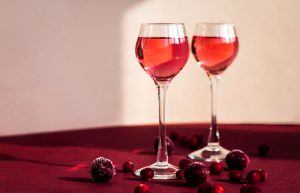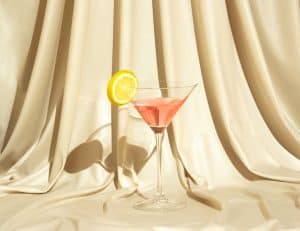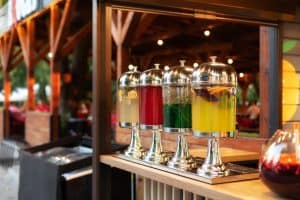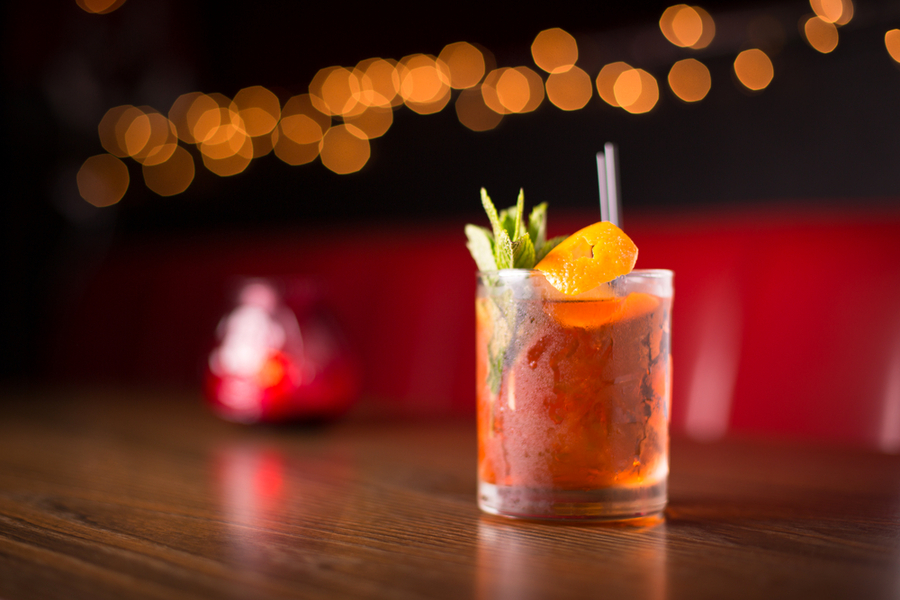
Nope, not a drink drawn from an ancient well in the back of the bar, nor a special elixir conjured up by a wizard. We can call bartenders wizards because they mix our drinks, and the taste is magical!
Well drinks don’t get much love in pop culture or on social media; there’s nothing wrong with ordering a well drink—if you want a simple drink, a well drink is the way to go. Or, you can upgrade it to a call drink.
So, what is a well drink?
Simply put, a well drink is made from less expensive spirits, usually kept on the speed rack or behind the bar at waist height. The spirits are kept there for easy access in the well and are those used to mix the majority of drinks at the bar. The five base spirits in bars are usually whiskey, gin, tequila, and vodka.
We’ll examine what the name means, how a well drink differs from a call drink, and whether cocktails are well drinks. We’ll also help you with some tips on ordering a drink at the bar without ending up with the wrong drink. Finally, we’ll look at well drinks made from the five base spirits in nearly every bar.
What’s in a Name?

You may wonder why on earth they call it a ‘well drink.’ Well (excuse the pun), the well is the easy-to-reach area behind the bar. It can also be called a speed rail or a speed rack.
The well is situated at waist level and allows the bartender easy access to all the ingredients they’ll need to reach components quickly to mix up drinks. The well is also stocked with the bottles a bartender would most often use.
You’ll be served rum from the well or speed rail when you order a drink at the bar, such as Rum and Coke. The well rail will often have bottles with speed pourers to maximize pouring efficiency (and lower pouring cost).
Additionally, the alcohol in the well rail won’t be a premium or expensive option. Familiar spirits on the well rail include whiskey, vodka, tequila, rum, gin, triple sec, and sometimes, bourbon.
You can think of the bottles in the well as ‘house spirits.’ These bottles are regularly used and are the brands that offer the best deal for the bar and the customer.
Remember, the House always wins—so the bar will put a higher profit margin on the spirits in the well to maximize their profits. Because the House always wins, the bottles in the well aren’t premium or exclusive options—those are reserved for call drinks (we’ll get to those later).
Just because they load the well with cheaper spirits doesn’t mean it tastes bad, so get that idea out of your mind. When your bartender mixes your rum and Coke, it doesn’t mean you’re getting a bad-tasting drink.
Most of the time, you won’t even be able to tell that an inexpensive liquor was used to make your drink and to put your taste buds and heart at rest. Not all cheap liquors taste bad (we all know there are exceptions).
Well Drinks vs. Call Drinks

Now that you know what a well drink is, let’s look at the opposite: call drinks. You’re probably past the days of college parties or being just about broke on your first job, so you’ve developed a taste for the finer things in life.
You now know that cheap liquor isn’t always the best option when you want a decent drink. Enter the call drink.
When you request a particular liquor at the bar, it is referred to as a ‘call drink.’ These are usually made from middle-shelf liquor options, falling in the middle price category. Typical options would be a Jack and Coke or a Bacardi and Coke.
A ‘call drink’ is also an option if you don’t like the vodka or gin in the well, and it is always a good idea to scan the well before you order your drink to make sure you’ll like the spirit they use to mix your drink.
For example, you might notice they use New Amsterdam gin (they make a great vodka, too), but you prefer Gordon’s or Hendrick’s. So, you’ll ask for Hendrick’s gin and tonic, not a generic one made with New Amsterdam gin.
Remember, call drinks will attract a higher price as well! However, the upgrade is worth it if you’re out celebrating a special event. Happy hour specials can sometimes turn the extra cost in your favor when the bar hosts a two-for-one special.
Speak to your bartender beforehand to ensure your liquor is also part of the special.
Are Cocktails Well Drinks?

Yup, they can be. Or they aren’t. It all depends on the cocktail. So let’s start with a definition and consider what constitutes a cocktail.
According to the Merriam-Webster Dictionary, the official description is “a usually iced drink of wine or distilled liquor mixed with flavoring ingredients” or “something resembling or suggesting such a drink as being a mixture of often diverse elements or ingredients.”
When you ask for a Long Island Iced Tea, it is a mixture of every spirit your bartender can lay their hands on in the bar. It fits the definition of a cocktail perfectly. Unless you want specific spirits in your cocktail, it will be mixed with liquors from the well.
If your bartender uses Captain Morgan rum and you ask for a ‘Rum and Coke,’ you’ll get this. But if you want a specific rum, it becomes a ‘call drink’ (we’ll get to those later). Or maybe it is a ‘call cocktail’?
Some cocktail recipes use specific spirits that are mixed, and they are usually not found in the well but instead on the middle or even top shelves.
The well holds the cheapest spirits, the middle shelf mid-range liquors, and the top shelf—as you might have guessed—the premium and most expensive spirits.
So before you order a fancy cocktail, check where the bottles are placed in the bar because you might end up with a nasty surprise when the bill arrives.
Ordering Your Drink Correctly
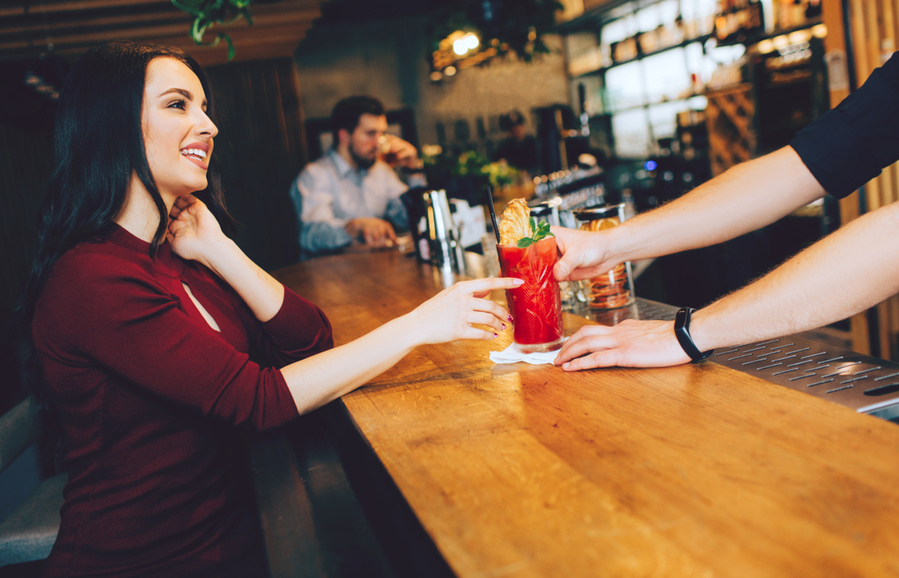
Whether you’re ordering a well drink or a call drink, it is vital to order ‘correctly’ and avoid confusing your bartender. In life, words have meaning—in bars, the word order has meaning too.
So when you order a ‘double soda and Scotch,’ don’t be surprised if you get a strange look from the bartender and a weird drink… Bartenders think in specific patterns: spirits first and mixer last, but when you switch the word order on jam-packed nights, things can quickly go sideways.
Bartenders typically pour the spirits first and the mixer last, but twisting the word order will confuse them, and you might end up with a weak or even a totally weird drink. For example, your ‘double soda and Scotch’ might become a double soda pour and a single shot of whisky.
Always order your drinks correctly to avoid this! Name your liquor, or liquor brand, first, and then the specified ingredient: ‘cranberry and vodka’ is the wrong way. Rather ask for vodka and cranberry to ensure you receive (and pay) for the right drink.
Popular Well Drinks
Below are some of the most popular well drinks. We’ve organized the ‘big five’ according to the basic representative spirits you’ll most likely encounter in the well and should have in your home bar.
Whiskey

Is there any mixer with which whiskey doesn’t pair well? We are still trying to figure that one out…
- Whiskey and Coke: is a staple of many bars and drinkers, and it doesn’t come as a surprise either—Coke pairs well with almost any liquor. Upgrade your well drink to a Jack and Coke (remember to call your spirit by name).
- Whiskey and Soda or Scotch and Soda: a drink by any other name would almost taste the same! This is a tried and trusted classic among whiskey drinkers. Two ounces of well whiskey in a highball glass filled with ice and topped off with soda or carbonated water delivers a refreshing drink.
Gin

Some regard gin as an acquired taste due to the piney flavor of the juniper. But it holds its own in many cocktails and well drinks.
- Gin Buck: Two ounces of gin topped up with ginger beer or ginger ale will deliver a refreshing and spicy Gin Buck.
- Gimlet: To make a Gimlet, you’ll need two ounces of gin, an ounce of lime juice, and one ounce of simple syrup. Pour all the ingredients into a shaker, fill it with ice, shake it all up until chilled, and strain it into a rock glass. A simple balance of just enough acidity balanced out with sweetness and a hint of juniper. Garnish your glass with a lime wedge.
Rum
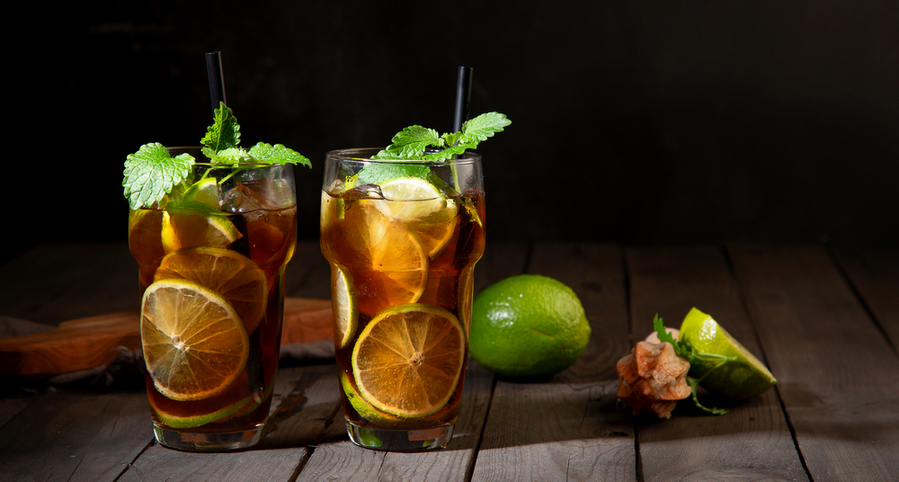
There are many options in the rum world, but the well bottle will probably be a Captain Morgan spiced rum or Bacardi rum. Don’t fret.
Rum is a versatile ingredient that can make any well drink worth ordering (or whipping up at home).
- Cuba Libre: originated when America occupied Cuba in the early twentieth century. And guess what? The classic Rum and Coke are a Cuba Libre! Four ounces of Coke mixed with two ounces of rum and garnished with a lime wedge delivers an excellent ‘well cocktail.’
- Dark and Stormy: If you like a Moscow Mule but want to try something new, Dark and Stormy is just the drink for you! Two ounces of rum in a copper mug are topped with ginger beer and garnished with a lime wedge. Simple, yet refreshing.
Tequila

Usually, Sauza, Jose Cuervo Blanco, or gold tequila can be found in the bar’s well. That doesn’t mean bad drinks. It means you can order some great drinks!
- Paloma: Often, Margaritas are the go-to option when people feel like ordering a tequila-based cocktail. The Paloma is a cousin of the Margarita and is often overlooked in the United States, which is sad! Any well-trained bartender can whip up an amazing Paloma. The basic ingredients are two ounces of tequila, half an ounce of lime juice, and a handful of ice. Place all the ingredients in a salted rim highball glass, top it off with grapefruit juice, and you have a refreshing lip-smacking beverage.
- A Tequila Sunrise: is the perfect option if you don’t like strong-tasting, boozy drinks. To make this fruity drink, you’ll need two ounces of tequila, one ounce of grenadine, and orange juice. Tequila and grenadine in the glass and top off with orange juice—an easy drink that doesn’t require special techniques.
Vodka
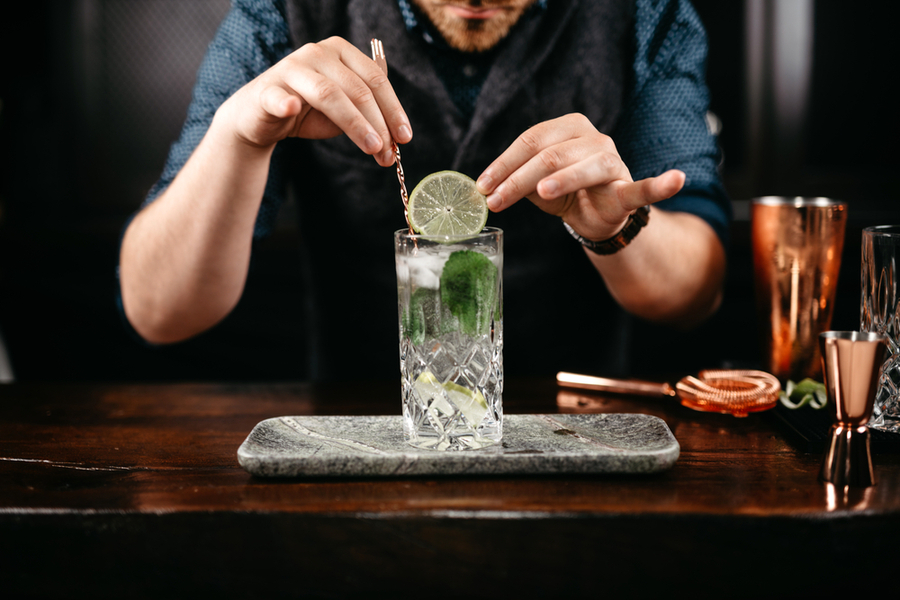
Vodka is a staple in many bars, and its relatively neutral taste can go with just about any mixer or let other cocktail ingredients shine.
- Dirty Shirley: Instead of the non-alcoholic Shirley Temple, why don’t you try the adult version? The Dirty Shirley requires two ounces of vodka, an ounce of grenadine, some Sprite, and a Maraschino cherry for garnish. Fill a highball glass with ice, add the vodka and grenadine, and top it all off with Sprite. The requisite cherry plays nicely with an orange slice to garnish your drink.
- The Vodka Soda: is just a modified Whiskey Soda. You’ll fill a Collins glass with ice, add two ounces of vodka, and top it off with club soda. Garnish with a lemon wedge, and don’t forget the squeezed lemon to bring balance.
There are many other well drink options, which you can check out here.
Conclusion
Whether you are a bar owner or like tinkering with drinks at home, a well drink is a workhorse designed to satisfy a wide range of tastes and customers.
For bars, well drinks mean high-profit margins, and for home drink wizards, they mean crowd pleasers during gatherings without depleting your more premium spirits. Although well drinks don’t get much love on social media or in pop culture—they are here to stay.
When you upgrade a ‘cheap’ well drink by calling for a specific spirit, you end up with a call drink.
The world is suddenly slightly sunnier because you got what you wanted (even though it is now a well drink) also, never back down from your well drink because everybody deserves an affordable drink that tastes good.


